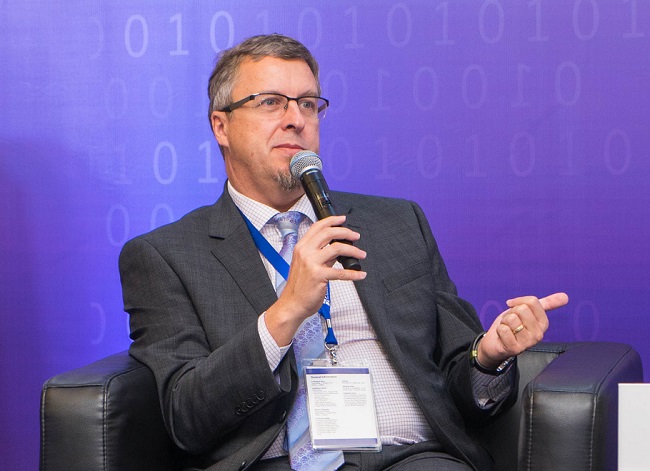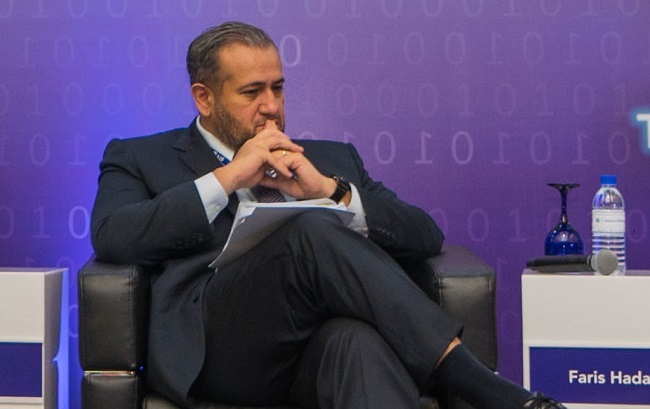Your Future Workforce: Don’t Tell Us What To Do!
- Companies still slow to adapt to change in workforce demands
- The flexible workspace concept is being distorted in practice

ORGANISATIONS are beginning to cotton on to the idea that emerging technologies are going to reshape the workplace and workforce of the future, but most have been slow to ready themselves for these changes.
For one, they better get used to the idea that top-down management may be a thing of the past, according to CBRE Group’s Asia Pacific director of workplace strategies Peter Andrew (pic above).
“In terms of the way we work, it is about self-organisation – it is no longer about being told what to do, it is that the ability to empower different people to come together to get whatever work that needs to be done, in the best possible way,” he says.
“There is a need for organisations to move away from the traditional model where there are rows of doors and desks; where people are told where to sit, what to work on and which team they are in.
“I think that is where the huge shift will occur,” he says, speaking at the recent Asian Institute of Finance (AIF) International Symposium, held this year in Kuala Lumpur.
According to Andrew, there is a new wave of workplaces called ‘activity-based workspaces’ – high-performance spaces where people share and move around.
The point is to engage with other people within the organisation: Get people out of their seats and to start talking and working together in different ways.
“They will get to choose where to work, have different choices of environments – from gardens and collaborative spaces to more quiet and focused spaces,” he says.
“Empower people to work together and use whatever they need to get the job done,” he adds.
Although it is touted to improve productivity, not many companies are adopting this workplace concept – or are just doing it wrong.
“I think the reason you don’t see many companies taking up active workspaces is because a great idea gets distorted. About 90-95% of typical open office environments are terribly implemented,” argues Andrew.
“These poorly designed environments are an accountant’s or real estate person’s solution to pack in as many people as possible,” he warns, speaking at a panel discussion at the AIF 2016 symposium.
Andrew still believes that giving people decent places to work will introduce better productivity and will save costs in the long run.
The shift in focus will be seen across all sectors and organisations, but it may take another three years before the trend will start to become prevalent.
Technology not a panacea

While technology has increased growth, created jobs and better services, it is not without its blemishes and ‘contingent liabilities,’ says Andrew’s fellow panellist Faris Hadad-Zervos (pic above), the World Bank’s country manager for Malaysia, East Asia and Pacific.
“The megatrend of technology has contributed to a gap. If you are educated, have enough money to afford a computer and broadband Internet, you are capable of reaping the benefits of technology.
“If you don’t, then that is an issue,” he adds.
The introduction of technology and automation has had adverse effects on the ‘middle skill’ class, which constitutes a big chunk of people in Malaysia. These are the people who provide routine tasks, and thanks to technology, are at risk of losing their jobs.
So how can middle skill employees protect themselves from being made redundant by technology?
“Just get ready for change,” Andrew advises. “Give yourself good skills like social and emotional intelligence because you are going to have to be able to work with other people.”
“You will need creative intelligence and must be innovative. The one thing that even AI (artificial intelligence) will take a long time to catch up on is really being creative and innovative,” he adds.
The third is to leverage on AI itself: Understanding the new tools and how to apply them in the right context.
The contingent workforce
With greater access to technology, the definition of lifetime employment has given way to the ‘contingent economy’ where many prefer to work on a non-permanent basis or under temporary contracts.
SAP Malaysia managing director Terrence Yong, also at the AIF 2016 panel discussion, says that millennials expect to change careers every two to three years.
“I would term them ‘serial part-timers,’ taking a variety of jobs from being an Uber driver to selling items on Carousell. They don’t hold permanent jobs, so how do companies manage a workforce like that?” he says.
Andrew aptly refers to this as the ‘uberisation’ of jobs, which has levelled the playing field for everyone, forcing organisations to change the way they manage talent.
“Young people want to have a purpose in what they do. They are looking for flexibility in how they work through projects, assignments and challenging stuff that they want to do,” Talent Corporation Malaysia (TalentCorp) chief executive officer Shareen Shariza.
She says that Malaysian companies have been slow to adapt to the concept of flexible work arrangements.
Shareen believes that local companies are risk-adverse when it comes to their talents, and want to hoard their talent.
But if they do not change, these talents will eventually go out and seek other opportunities, she warns.
News from Digital News Asia (DNA)
-eventcategoryimage.png)

